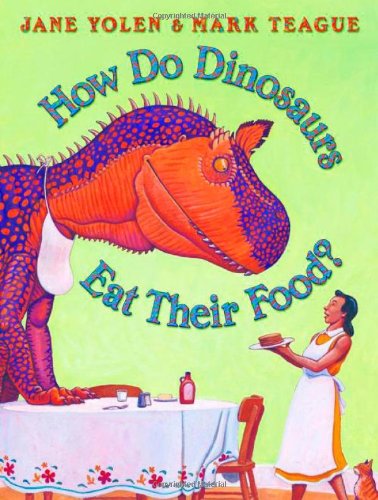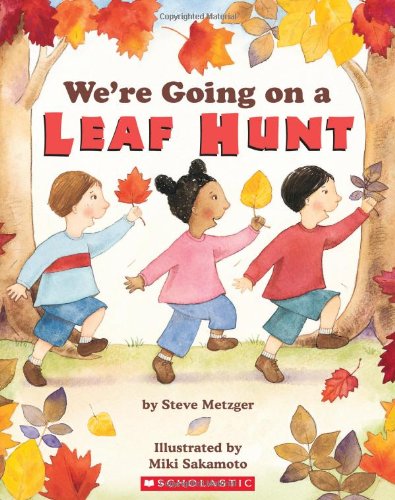As part of our healthy body theme, we spent some time exploring food and eating. We also talked about table manners and being polite while eating. We read How Do Dinosaurs Eat Their Food?
And practiced setting the table at this dishes sorting center.
After we talked about some of the foods traditionally eaten on Thanksgiving, we also had a pretend Thanksgiving Dinner.
First we made our own place settings:
I modeled how to go to the food table and select one food item at a time to take back to their plate. I also added a counting element to this activity because we are always working on careful counting.
Once the students counted out and added all of the food, they could go back for seconds if they wanted more.
In the end, each student had a fun Thanksgiving Dinner collage. This activity was great for practicing counting, spatial awareness, fine motor (drawing and glueing), and using vocabulary about food and eating.
Tuesday, November 25, 2014
Saturday, November 15, 2014
Squeaky Clean Sensory Bin
This sensory bin has been pretty popular.
I introduced this hand washing and bathing sensory bin as part of our healthy body unit. All it took was some sponges, foam cut-outs, soap, and water. Our hands have never been cleaner.
Thursday, November 13, 2014
Dressed for Winter
There has been a wintry chill in the air all week, and today the weather forecast predicted snow. Our focus this month has been taking care of our bodies, so in light of the change in the weather I planned a last-minute, mini-lesson on dressing for winter.
First, we had a quick discussion about how it had been getting colder outside and the weather report about snow. I brought up taking care of our body by keeping it warm when it gets cold, and asked the students for ideas about how to do that.
Then we read the Froggy book, Froggy Gets Dressed by Jonathan London.
In this book, Froggy wakes up one winter day and sees snow outside. Even though his mom encourages him to keep hibernating (this aspect of the story could be used again in the winter for talking about hibernating animals), he is determined to go anyway. Froggy goes about getting dressed for winter in silly ways, and keeps forgetting important items of clothing. This process makes for really fun read-aloud that also reinforces the idea of dressing appropriately for the weather.
My stuffed frog is not actually Froggy (it came with this Kohl's Cares book I got a few years ago), but it sure looks close enough. So after we read the book, we dressed Froggy. I was in a little bit of a rush to find clothes for him this morning and after ransacking my son's old baby clothes, this was about the best I could come up with. I forgot to grab mittens or a scarf, but the kids didn't seem to mind.
As soon as I was done, a student asked "Can we play with Froggy?" So naturally, he ended up in the dramatic play room where the kids could keep dressing him up for winter. I think this play activity will easily evolve into other forms of dressing for winter play as the season goes on.
The best part of today was that every kid wanted to wear their coat when we went outside to play, and we were not disappointed by the weather. As we were playing outside, little snowflakes started to fall, and the kids were so excited. The snow didn't stick or even last long, but it was just enough to reinforce the idea that a new season is on its way.
First, we had a quick discussion about how it had been getting colder outside and the weather report about snow. I brought up taking care of our body by keeping it warm when it gets cold, and asked the students for ideas about how to do that.
Then we read the Froggy book, Froggy Gets Dressed by Jonathan London.
In this book, Froggy wakes up one winter day and sees snow outside. Even though his mom encourages him to keep hibernating (this aspect of the story could be used again in the winter for talking about hibernating animals), he is determined to go anyway. Froggy goes about getting dressed for winter in silly ways, and keeps forgetting important items of clothing. This process makes for really fun read-aloud that also reinforces the idea of dressing appropriately for the weather.
My stuffed frog is not actually Froggy (it came with this Kohl's Cares book I got a few years ago), but it sure looks close enough. So after we read the book, we dressed Froggy. I was in a little bit of a rush to find clothes for him this morning and after ransacking my son's old baby clothes, this was about the best I could come up with. I forgot to grab mittens or a scarf, but the kids didn't seem to mind.
As soon as I was done, a student asked "Can we play with Froggy?" So naturally, he ended up in the dramatic play room where the kids could keep dressing him up for winter. I think this play activity will easily evolve into other forms of dressing for winter play as the season goes on.
The best part of today was that every kid wanted to wear their coat when we went outside to play, and we were not disappointed by the weather. As we were playing outside, little snowflakes started to fall, and the kids were so excited. The snow didn't stick or even last long, but it was just enough to reinforce the idea that a new season is on its way.
Tuesday, November 11, 2014
Math in the Fall
This is just a quick look at some of the ways we've been practicing math skills using fall items in our classroom.
Patterns
Counting and One-to-One Correspondence
How Many Seeds in a Pumpkin?
We used the hundreds board to get an idea of how many seeds might be inside a pumpkin, and whether it would be more or less than 100. The students each made their estimate, and then we worked together to practice careful counting and placed only one seed on each number.
We filled the whole chart, and still had many seeds left over. There were definitely more than 100 seeds in our pumpkin, which surprised most of the kids. It was a great experience with number sense, and determining less and more.
Saturday, November 8, 2014
Book Love: Leaf Man
Leaf Man by Lois Ehlert is one of my favorite books about leaves, probably because I am drawn to the creative illustrations. The illustrations are full of autumn leaf collages that are arranged to be different animals and scenes, and of course the leaf man. The story itself reinforces the simple concept of the wind blowing leaves in the fall. It was a nice connection to our senses exploration using leaves during the week as well.
Read-Aloud Tip: During the story, I involved my students by asking them to help the wind blow the leaf man from page to page. So after I read every page, I paused for a minute to let them blow on the pages.
Activity: The illustrations in this book just make me want to try and create my own leaf creations. My students had the option to make their own leaf creations during center choices time. I sat at the table at first, and modeled how to glue the leaves to the paper and talked through some of my own ideas.
True to preschool form, most of the students were especially interested in the process of squeezing the glue onto the paper, but a few students wanted to tell me about what they made with their leaves.
| "It's a turtle drinking glue" |
 |
| "A Rocketship" |
Friday, November 7, 2014
Senses Exploration: Leaves
This week, I introduced the five senses to my preschool class. It's a concept we will be visiting regularly throughout the year to explore and experience different learning topics. Since fall leaves are abundant in my neighborhood right now, we used that as a backdrop for using our five senses.
First, we read (and acted out) this book:
Then we went outside and went on our own leaf hunt. I prompted the kids to use their senses as they looked for the leaves by asking questions. What does it sound like when you walk through the leaves? What do the leaves look like? What colors do you see? What does it feel like? etc. When we came back inside we made a simple chart to process the experience. It was hard to come up with a word to describe how leaves smell- they just kept saying "it smelled like leaves!" :)
We decided as a class that there was no need to taste the leaves. We were pretty sure they would not taste good. :)
We ended up with a nice collection of leaves to use for some activities in class.
I also went on my own leaf hunt in preparation for these activities because I wanted some leaf manipulatives that might last a little longer. I have made laminated leaf bookmarks before with classes that have turned out pretty well, and so I tried laminating some leaves and also made some leaf color pages for the kids to work with.
Unfortunately, not all of the leaves kept their vibrant color after a few days went by, but it still worked as a learning tool. (I used laminating sheets and my desktop laminator to make them, and wonder if the colors might last better with a professional laminator -which is what I have used in the past).
I also made some leaf pages to use for building math vocabulary words such as big/small, taller/shorter, size, shape, etc. as we describe, sort, and work with leaves.
First, we read (and acted out) this book:
Then we went outside and went on our own leaf hunt. I prompted the kids to use their senses as they looked for the leaves by asking questions. What does it sound like when you walk through the leaves? What do the leaves look like? What colors do you see? What does it feel like? etc. When we came back inside we made a simple chart to process the experience. It was hard to come up with a word to describe how leaves smell- they just kept saying "it smelled like leaves!" :)
We decided as a class that there was no need to taste the leaves. We were pretty sure they would not taste good. :)
We ended up with a nice collection of leaves to use for some activities in class.
I also went on my own leaf hunt in preparation for these activities because I wanted some leaf manipulatives that might last a little longer. I have made laminated leaf bookmarks before with classes that have turned out pretty well, and so I tried laminating some leaves and also made some leaf color pages for the kids to work with.
Unfortunately, not all of the leaves kept their vibrant color after a few days went by, but it still worked as a learning tool. (I used laminating sheets and my desktop laminator to make them, and wonder if the colors might last better with a professional laminator -which is what I have used in the past).
I also made some leaf pages to use for building math vocabulary words such as big/small, taller/shorter, size, shape, etc. as we describe, sort, and work with leaves.
Subscribe to:
Posts (Atom)



































